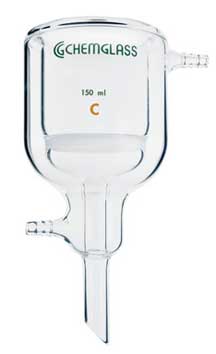



Find all of your laboratory and workplace safety supplies at Safety Emporium!
 Eye Wash |
 Glossary Index |
 Fibrosis |
| MSDS Topics |
Free Sites | FAQ's | Regulations | Glossary | Software | Suppliers |
| Books | Forum | Poll | Fun stuff | Quiz | Store | |
| Understand your MSDS with the MS-Demystifier | Search ALL our MSDS info | |||||

Your chemical reactions can be run safely and effectively with US-made clamps and other laboratory accessories from Safety Emporium.
A fetotoxin is a substance or agent that can poison or cause degenerative effects in a developing fetus or embryo. The effects are generally similar to those an adult would suffer from exposure.
This is closely related to a teratogen, which causes malformations of an embryo or fetus.
Both fetotoxins and teratogens are reproductive toxins, substances which cause damage to one's reproductive and/or endocrine system and/or a developing fetus.
A fetotoxin can cause developmental toxicity. The American College of Occupational and Environmental Medicine defines developmental toxicity as:
The occurrence of adverse effects on the developing organism that may result from exposure before conception [pregnancy] (either parent), during prenatal [before birth] development, or postnatally [after birth] to the time of sexual maturation [puberty] . Adverse developmental effects may be detected at any point in the life span of the organism."
Examples of developmental toxicity include fetal death, structural abnormalities or birth defects, and functional deficiencies or altered growth.
In response to potential reproductive hazards and fetotoxins, the state of California (USA) passed a measure called the The Safe Drinking Water and Toxic Enforcement Act of 1986, which is better known by its ballot name, Proposition 65. This act attempts to regulate the use of carcinogens as well as fetotoxins and reproductive hazards. Products containing any of the 800 listed chemicals must carry a warning unless the exposure is low enough to pose no significant risk of cancer or is significantly below levels observed to cause birth defects or other reproductive harm. Further information can be found under Further Reading below.
The landmark 1991 Supreme Court case, United Automobile Workers v. Johnson Controls, Inc involved an employer who barred women from knowingly working with fetotoxic lead metal. The court ruled this policy, despite its good intention of preventing fetal harm, violated Title VII of the Civil Rights Act of 1964 as amended by the Pregnancy Discrimination Act of 1978. The obvious implication is that employers should improve the safety of their workplaces instead.
Always minimize the use and release of fetotoxins (or believed fetotoxins) in the workplace. If you are of child-bearing age, and must work with such materials, make sure that your employer implements workplace controls that minimize or eliminate your exposure. Better yet, see if you can avoid working with such materials. You will find some very useful links about reproductive health issues in the workplace in Further Reading (below).
Safety Data Sheets are not required to carry Proposition 65 warnings. However, the products on that list must carry a warning statement that they contain substance(s) "known to the state of California to cause cancer" or"cause birth defects or other reproductive harm". For specific warnings see https://www.p65warnings.ca.gov/sample-warnings-and-translations-businesses.

Filter mixtures at constant temperature with laboratory frits and filters from Safety Emporium.
See also: mutagen, carcinogen, reproductive toxin.
Additional definitions from Google and OneLook.
Entry last updated: Wednesday, January 4, 2023. This page is copyright 2000-2025 by ILPI. Unauthorized duplication or posting on other web sites is expressly prohibited. Send suggestions, comments, and new entry desires (include the URL if applicable) to us by email.
Disclaimer: The information contained herein is believed to be true and accurate, however ILPI makes no guarantees concerning the veracity of any statement. Use of any information on this page is at the reader's own risk. ILPI strongly encourages the reader to consult the appropriate local, state and federal agencies concerning the matters discussed herein.